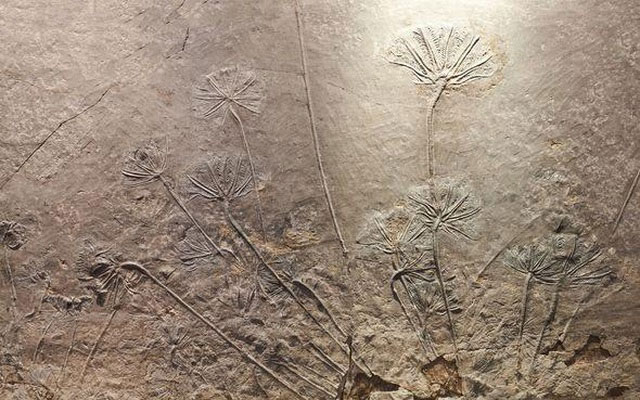400 million-year-old fossils are thought to be the key to plant evolution
Researchers have discovered a 400 million-year-old plant fossil that could reveal an important step in the way plants evolved in the past.
A team of scientists has studied fossils stored in the Smithsonian's National Museum of Natural History for decades. According to Stanford University's Stanford Earth department, in one lucky finding, they identified an ancient plant species 'unlike anything alive today'.
This research focuses primarily on the reproduction of plants . Currently, flowers, pine cones and berries like oak and chestnuts are all examples of how plants reproduce. And wind, rain, insects and animals are all the ways that plant seeds are spread around.
But the new study, published today in the journal Biology, aims to provide an insight into how these reproductive systems evolve over time.
From about 30 small pieces of rock, originally mined from the Campbellton Formation in New Brunswick, Canada, the team has identified more than 80 reproductive structures.
These structures contain spores, which are used in the reproductive cycle of plants. They are very small, only 70 to 200 millimeters across, or one or two hairs. The size difference between spores in different structures is what excites researchers.
Andrew Leslie, lead author of the study, said it is rare to have so many sporangia with well-preserved spores that you can measure them. Some structures contain only large or small spores, while others contain only medium-sized spores, and others contain many different sized spores.

Fossils may contain evidence for plants as well as animals
As such, this fossil is considered to be one of the best examples of 'a seemingly mediated phase of reproductive biology in plants'.
Leslie also explained that in previous studies of fossils, researchers tend to see other spore-like plants still exist today. But this new discovery provides a rare snapshot of a point in history where there is a very high variation of spores in the reproductive structure. This fossil also shows a fairly large development in the evolutionary timeline of reproductive biology in terrestrial plants.

Flowers are one of the reproductive ways of plants today
Indeed, it is the first such evidence. Stanford Earth noted that in the next 20 million years no such specimen will appear in fossil samples. The story encompassing the reproduction of terrestrial plants is one of the problems of increased division of labor, specialization and complexity, but it has to be started somewhere - and it begins only. by simply creating small spores and large spores. With these fossils, we can identify several ways that plants can do it.
It is thought that this fossilized specimen probably belonged to an extinct group of plants called herbaceous barinophytes - possibly related to the yew tree.

The Devonian witnessed an evolution from mosses to forests
This fossil is from the early Devonian period - a time when it witnessed the diversity of plants, from small mosses to huge forests.
The Devonian period is also known as the Age of Fishes, although this period also plays an important role in plant life. Livescience wrote that Ray finfish during this period were the ancestors of most modern fish. In addition, some types of marine creatures, such as sharks and rays, were common in the late Devonian.
- Discovering plant fossils 240 million years
- The 1 billion-year-old fossil of the oldest plant in the world
- Detecting plant fossils 240 million years
- The 390-million-year-old fossil has claws
- Fossil flowers were discovered more than 174 million years ago
- Excavating fish fossils 429 million years old
- 185 million year fossils of ancient organisms have 38 children
- The 1.6 billion year fossil shook the theory of life on Earth
- Monkey skull fossils 20 million years ago have the potential to reveal the evolution of the human brain
- The law of evolution is complex
- Discover 305 million-year-old spider fossils
- Biochemical fossils move from shallow water to shallow water
- The 380-million-year-old fish fossil carries the fetus
- Detection of 67 million-year-old dinosaur fossils
 Discovered an ancient centipede fossil 99 million years old
Discovered an ancient centipede fossil 99 million years old Discovered bat-like dinosaurs in China
Discovered bat-like dinosaurs in China Discovered a 200-year-old bronze cannon of the coast
Discovered a 200-year-old bronze cannon of the coast Discover 305 million-year-old spider fossils
Discover 305 million-year-old spider fossils